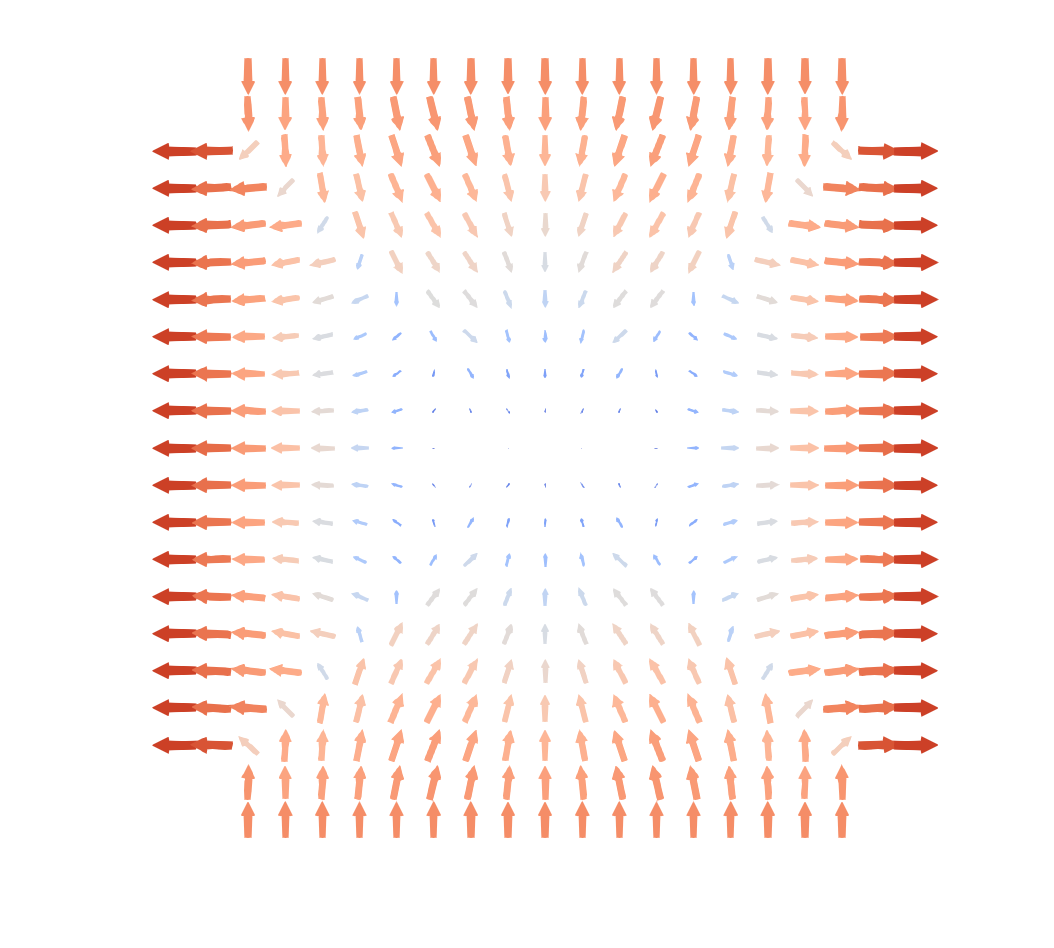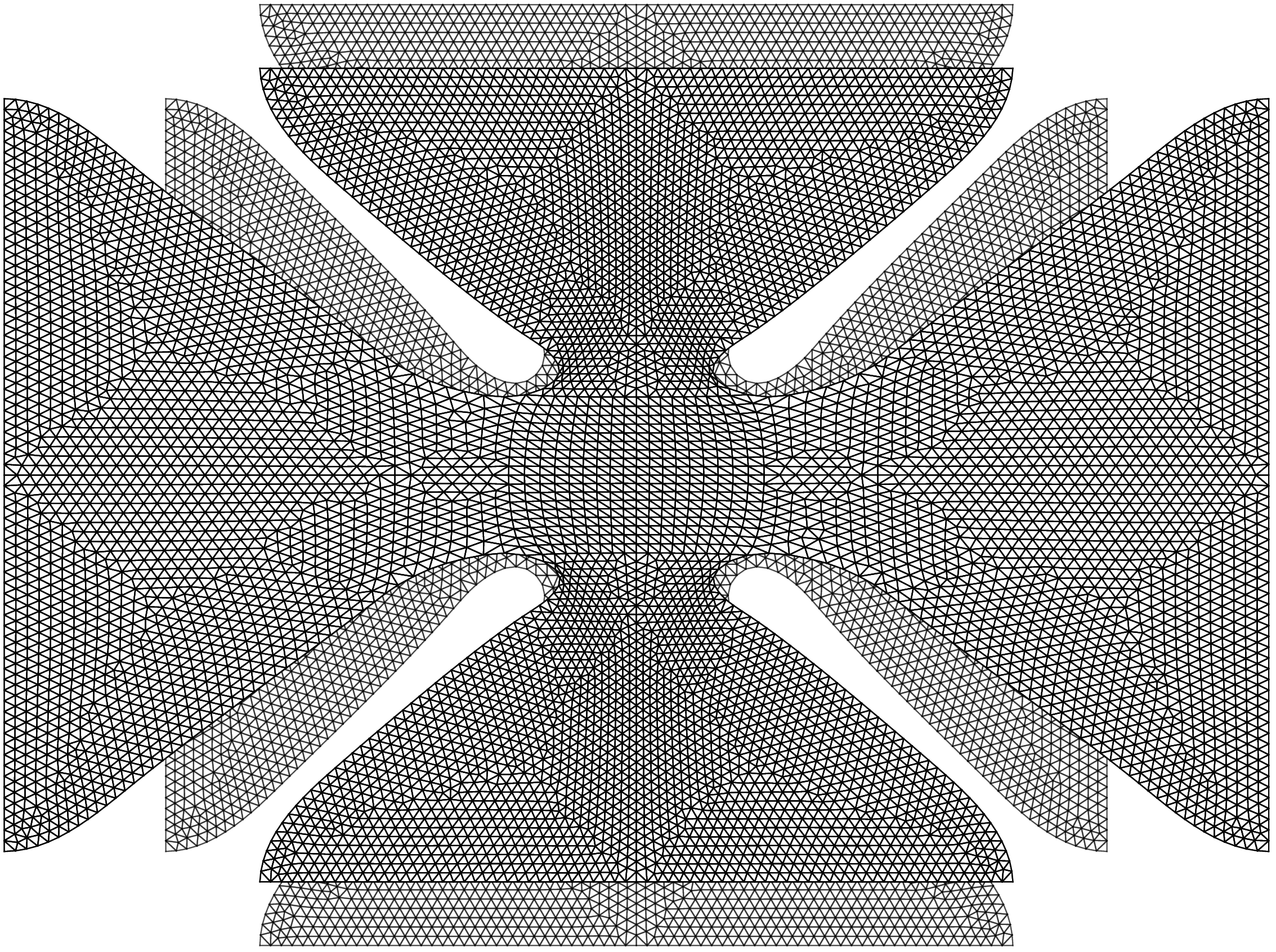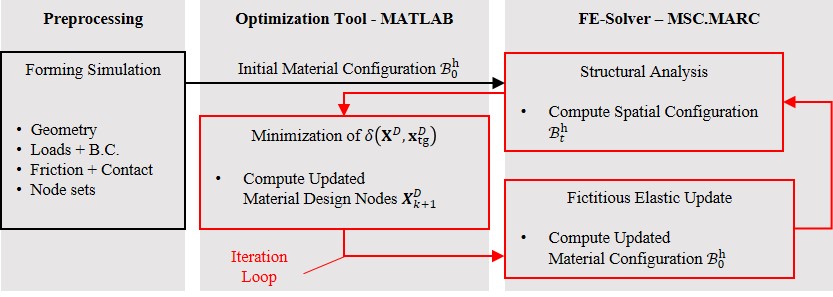C3 - Parameter und Formoptimierung
Parameter und Formoptimierung in der finiten Elastoplastizität
Projektstatus: abgeschlossen
Letztes Update: 21.10.2020
Mitglieder
- Prof. Dr.-Ing. Paul Steinmann (bis 31.03.2021)
- Prof. Dr.-Ing. habil. Kai Willner (bis 31.03.2021)
- Prof. Dr.-Ing. Paul Steinmann (bis 31.03.2021)
- Prof. Dr.-Ing. habil. Kai Willner (bis 31.03.2021)
- M. Sc. Michael Caspari (bis 31.03.2021)
- M.Sc. Benjamin Söhngen (bis 31.03.2021)
Antragsteller
Projektleiter
Projektbearbeiter
Das Ziel des Teilprojekts C3 ist die Behandlung inverser mechanischer Probleme für die Identifikation von Materialparametern und zur Bestimmung einer optimalen Bauteilgeometrie.
Aufbauend auf einem elasto-plastischen Materialmodell für große Verzerrungen erfolgt eine Untersuchung der Identifikation der Materialparameter mithilfe einer Kreuzzugprobe und virtueller Verschiebungsfelder. Hierfür werden aus einem experimentell gemessenen Verschiebungsfeld die lokalen Deformationsgradienten abgeleitet und daraus ein Verzzerungsmaß berechnet. Dieses dient der Rekonstruktion eines Spannungsfelds, das zusammen mit der Ableitung sinnvoll gewählter virtueller Verschiebungsfelder integriert, im Gleichgewicht mit den äußeren Lasten stehen muss.
Abbildung 1: Beispielhaftes virtuelles Verschiebungsfeld, angewandt auf Kreuzzugprobe
Der Zweck der Formoptimierung ist die optimale Bestimmung der materiellen Konfiguration, d.h. die Form eines Halbzeugs, innerhalb einer numerischen Umformsimulation. Dabei ist das Optimalitätskriterium die Differenz zwischen der berechneten räumlichen Konfiguration und der vordefinierten Zielkonfiguration. Durch ein nicht-invasives Vorgehen wird durch die Optimierung nicht in mechanische Formulierung der Umformsimulation eingegriffen. Der Einsatz effizienter und anwendungs-orientierte kommerzielle FE-Solver ist somit möglich.
Abbildung 2: Ablauf der Formoptimierung mit Pre-Processing, Optimierung und separierter Umformsimulation
Arbeitskreise
Veröffentlichungen
2021
- Söhngen, B.; Caspari, M.; Willner, K.; Steinmann, P.: On optimization strategies for inverse problems in metal forming. In: M. Merklein, A. E. Tekkaya, B.-A. Behrens (Hrsg.): Sheet Bulk Metal Forming. Research Results of the TCRC73 2020, (2021), Zug: Springer Nature Switzerland, S. 354-377
2020
- Caspari, M.; Landkammer, P.; Steinmann, P.: Shape optimization of a backward extrusion process using a non-invasive form finding algorithm. In: 23rd International Conference on Material Forming, 57(2020), Procedia Manufacturing, S. 873-880
2019
- Söhngen, B.; Willner, K.: Parameter identification of strain rate dependent hardening for sheet metals. In: Proceedings in Applied Mathematics and Mechanics, 19(2019)1, veröffentlicht
2018
- Caspari, M.; Landkammer, P.; Steinmann, P.: Illustration of an improved non-invasive form finding algorithm. In: 21st International ESAFORM Conference on Material Forming, ESAFORM 2018, 1960(2018), Palermo, Italy: AIP Conference Proceedings, S. 110003
- Caspari, M.; Landkammer, P.; Steinmann, P.: A non-invasive node-based form finding approach with discretization-independent target configuration5(2018)1, Advanced Modeling and Simulation in Engineering Sciences, S. 11
- Landkammer, P.; Caspari, M.; Steinmann, P.: Improvements on a non-invasive, parameter-free approach to inverse form finding61(2018)4, Computational Mechanics, S. 443-447
- Landkammer, P.: Inverse Formfindungsverfahren zur Anwendung in der Umformtechnik. In: P. Steinmann, K. Willner (Hrsg.): Dissertation, Schriftenreihe Technische Mechanik, 28(2018), Erlangen: FAU Erlangen-Nürnberg, S. 1-135
2017
- Caspari, M.; Landkammer, P.; Steinmann, P.: Inverse form finding with H-adaptivity and an application to a notch stamping process. In: Proceedings of the 14th International Conference on Computational Plasticity - Fundamentals and Applications, COMPLAS 2017, 2017(2017), Barcelona; Spain, S. 88-99
- Landkammer, P.; Söhngen, B.; Steinmann, P.; Willner, K.: On gradient-based optimization strategies for inverse problems in metal forming. In: GAMM-Mitteilungen, 40(2017)1, Wiley-VCH Verlag, S. 27-50
- Söhngen, B.; Willner, K.: Identification of nonlinear kinematic hardening parameters for sheet metal from biaxial loading tests. In: Oñate E., Owen D.R.J. , Peric D. , Chiumenti M. (Hrsg.): XIV International Conference on Computational Plasticity. Fundamentals and Applications, (2017), S. 373-384
- Härtel, M.; Pfeiffer, S.; Schmaltz, S.; Söhngen, B.; Kulawinski, D.; Willner, K.; Henkel. S.; Biermann, H.; Wagner, M.F.-X.: On the identification of an effective cross section for a cruciform specimen. In: Strain, 54(2017)1, veröffentlicht
Vorträge
2020
- 04.05.2020: Caspari, M.: Improving a node-based form finding approach to forming processes, BTU Cottbus-Senftenberg (online)
2019
- 12.02.2019: Caspari, M.: Node-based form finding with alternating number of nodes caused by remeshing, European-Latin-American Conference of Theoretical and Applied Mechanics (ELACTAM-2019), Havana, Cuba
- 23.06.2019: Caspari, M.: Improving a node-based form finding approach to forming processes, The 13th International Conference on Numerical Methods in Industrial Forming Processes (Numiform 2019), Portsmouth, New Hampshire, USA
2018
- 23.04.2018: Caspari, M.: Illustration of an improved non-invasive form finding algorithm, 21st International ESAFORM Conference on Material Forming – ESAFORM 2018, Palermo, Italy
- 22.07.2018: Caspari, M.: Node-Based Form Finding with Shape-Dependent Target Definition, 13th World Congress in Computational Mechanics, New York, USA
2017
- 05.09.2017: Caspari, M.: Inverse from finding with h-adaptivity and an application to a notch stamping process, XIV International Conference on Computational Plasticity Fundamentals and Applications, Barcelona, Spain
- 11.10.2017: Caspari, M.: Shape optimization with application to inverse form finding and the use of mesh adaptivity, 7th GACM Colloquium on Computational Mechanics (GACM 2017), Stuttgart, Germany









